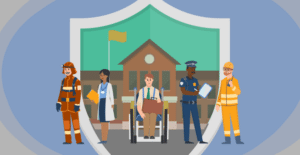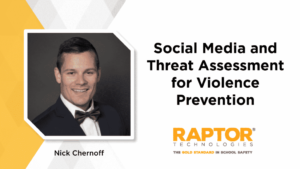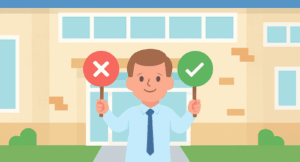Listen to this blog
5 minutes
The on-going student mental health and school violence crisis across the U.S. has emphasized how important it is to have effective school safety plans. Threats to school safety can come in a variety of forms, such as fights, shootings, natural disasters, cyberattacks, and more, so it is imperative that all schools be prepared. While some of these threats may seem to be more common in public schools, private schools are not immune. Private schools must still develop school safety plans and be prepared to address and respond to a range of circumstances and threats.
Is violence more common in public schools than in private schools?
Between 2008 and 2017, there were 41 incidents involving students or former students using a weapon to carry out an attack on their school, but only 2 of them were at private schools, according to a report published by the U.S. Secret Service National Threat Assessment Center (NTAC) in 2019. Another NTAC study from 2021 showed that out of 67 prevented attacks on schools, only 1 of those cases was at a private school.
Private schools may be less susceptible to violent attacks because they are typically comprised of smaller, more involved communities. These smaller schools may have a simpler time identifying when a student is struggling or in a crisis. A disadvantage to their size, however, is that private schools often lack the mental health resources that public schools have, so some struggling students may go unnoticed and therefore untracked and unaddressed. Private schools must adopt a way to address student mental health issues before they turn into a grievance that can lead to violence.
Is there a difference between public and private schools’ safety plans?
Although laws vary by location, school safety experts recommend both public and private schools follow similar guidelines regarding general safety and violence prevention. Differences in school safety plans should result from factors such as facilities usage, the number of students enrolled, the number of staff members employed, and whether the school requires students and staff to live on campus or not.
One example of a difference is drills. In most states, private schools are exempt from state reporting and drilling rules that public and charter schools follow. However, it is best practice for private schools to conduct these safety drills as often as public schools, so that students and staff are familiar with how to respond if an emergency occurs.
One challenge that public schools face is having to undergo more complex processes to receive funding (in the form of grants or bond initiatives) to apply towards safety enhancements. Private schools aren’t as likely to encounter this challenge, but that’s not to say that they don’t have challenges of their own in having to raise or allocate money to address security.
Another example of a difference is that private schools often have shared facilities, such as churches, that other community members use. This results in more people going in and out of the buildings, thus making the task of screening visitors and contractors more difficult.
Additionally, for private schools that offer boarding, safety plans must include details regarding evacuation in the event of a disaster, and if the location where classes are held gets destroyed, a temporary/alternative location must be determined while the original location is under repair. Public schools, on the other hand, can more easily reallocate students across other campuses.
How Raptor can help all schools enhance safety
Private schools face unique challenges, but Raptor is ready to help. Serving over 4000 Private and Catholic schools of all shapes and sizes nationwide, the Raptor School Safety Suite is a valuable asset that all schools can use to enhance safety on their campuses. Raptor helps schools keep unwanted entrants out, manage volunteers, and confidently respond to any emergency—all in one, user-friendly integrated suite.
Contact us today to learn more or schedule a personalized demo.
Related Resources
Bridging the Gap Between Schools and Public Safety
Collaborating with public safety improves school emergency preparation, response, and recovery.

Listen to this blog
5 minutes







